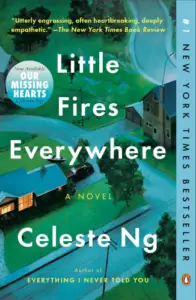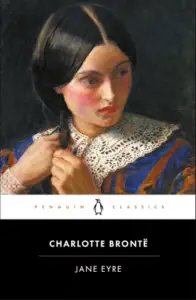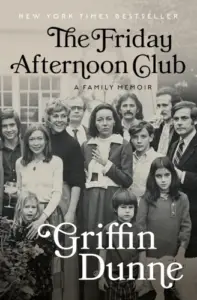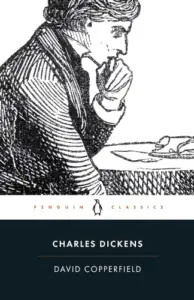The Goldfinch
Book Author: Donna Tartt
Summary reviewed by:
Terrence Timmons
Terrence Timmons
Analyst
Bachelor of Arts (BA), University Of California, Santa Barbara 2019
With over 4 years of experience as an analyst. Terrence Timmons is committed to analyzing summaries without compromising on quality.
The Goldfinch: Summary
What if a single stolen painting dictated the course of your life? The Goldfinch by Donna Tartt, a Pulitzer Prize-winning novel, plunges readers into the tumultuous life of Theodore Decker, a 13-year-old boy whose world shatters when his mother dies in a terrorist attack at the Metropolitan Museum of Art. Amid the chaos, Theo impulsively takes "The Goldfinch," a small, captivating painting by Carel Fabritius, setting off a chain of events that will haunt him for years.
Orphaned and adrift, Theo finds himself bouncing between the luxurious but cold Park Avenue apartment of his wealthy friend’s family and the desolate, sun-bleached suburbs of Las Vegas, where he befriends Boris, a reckless and charismatic boy with a penchant for trouble. The painting becomes Theo’s only constant, a symbol of his lost innocence and the heavy burden of guilt that weighs on him.
As Theo grows older, the painting drags him deeper into the underworld of art crime, where he grapples with the complexities of love, loss, and the pursuit of beauty in a world rife with corruption. Tartt’s masterful narrative, rich with psychological depth and moral ambiguity, paints a portrait of a life lived on the edge of destruction and redemption. Though The Goldfinch is a standalone novel, its intricate plot and deeply flawed characters offer a story that resonates long after the final page.
Spoilers (watch a short ad to reveal spoilers)
The Goldfinch: Genres
Literary fiction
Coming of age novel
Psychological fiction
Tragedy
Realism
The Goldfinch: Main Characters
Theodore “Theo” Decker: A sensitive and intelligent boy who loses his mother in a terrorist attack, Theo clings to “The Goldfinch” painting as a reminder of her. His values are deeply rooted in loyalty and love, as shown by his lifelong obsession with the painting and his troubled affection for Pippa. Despite his many moral failings, Theo is driven by a desperate need for connection and redemption, which leads him into dangerous situations but also reveals his capacity for deep reflection and remorse.
Boris Pavlikovsky: A charismatic and reckless figure, Boris is Theo’s closest friend during his years in Las Vegas. He values loyalty and survival above all else, illustrated by his unwavering support for Theo even as they both descend into criminal activities. Boris’s moral ambiguity is evident in his willingness to engage in illegal acts, yet his actions often reveal a twisted sense of justice and protectiveness toward Theo.
James “Hobie” Hobart: A kind and nurturing antiques restorer, Hobie represents stability and compassion in Theo’s chaotic life. He values craftsmanship and integrity, as shown in his meticulous work with furniture and his fatherly care for Theo. Hobie’s moral compass is unwavering, and he becomes a surrogate father figure, offering Theo a sense of belonging and purpose.
Pippa: A red-haired girl who, like Theo, is traumatized by the bombing. Pippa values beauty and art but is haunted by her past, making her unable to fully embrace life or Theo’s love. Her quiet resilience and self-awareness show her deep sensitivity, but her choices reflect a desire to protect herself from further pain, distancing herself from Theo despite their shared history.
The Goldfinch: Themes
Trauma and Loss: The novel explores the profound impact of trauma on the human psyche, particularly through Theo’s experience of losing his mother in the bombing. This loss shapes his identity, relationships, and decisions, as he seeks solace in “The Goldfinch” painting while struggling with guilt and grief.
Art and Beauty: Art is portrayed as both a source of comfort and a catalyst for obsession. The painting “The Goldfinch” symbolizes the enduring power of beauty to transcend time and tragedy, influencing the characters’ lives in profound ways. Art becomes a means of survival for Theo, even as it entraps him in a world of crime and deceit.
Fate and Free Will: The novel delves into the tension between fate and free will, questioning how much control we truly have over our lives. Theo often reflects on the role of fate in his experiences, wondering whether his actions were predetermined or the result of his choices, particularly in relation to the painting and the people he encounters.
Isolation and Connection: Throughout the story, Theo experiences deep isolation, both emotionally and physically, as he navigates a world without his mother. His relationships with Boris, Hobie, and Pippa highlight his longing for connection and the ways in which people, despite their flaws, can offer solace and understanding.
The Goldfinch: What You Need to Know
(Contains Spoilers: Perfect for readers seeking a quick review.)
The Goldfinch is a sprawling narrative that follows Theo Decker’s journey from childhood trauma to a morally complex adulthood. The story begins when a terrorist bombing at the Metropolitan Museum of Art kills Theo’s mother. In the aftermath, Theo impulsively takes "The Goldfinch," a painting by Carel Fabritius, which becomes a symbol of his loss and the center of his life.
After the bombing, Theo is taken in by the Barbours, a wealthy family in New York, but he feels out of place in their world. He clings to "The Goldfinch" as a connection to his mother. He also meets Hobie, an antiques restorer, and Pippa, a red-haired girl who was also at the museum during the bombing. Both Hobie and Pippa become crucial figures in his life, with Hobie offering stability and a father figure role, and Pippa embodying his unrequited love and shared trauma.
Theo’s life takes a drastic turn when his estranged father arrives and takes him to Las Vegas. There, Theo meets Boris, a wild and charismatic boy who becomes his closest friend. Their friendship is marked by a shared sense of abandonment and a descent into drug use and petty crime. After his father dies in a car accident, Theo flees back to New York, returning to Hobie’s care.
As an adult, Theo becomes a partner in Hobie’s antiques business but is haunted by his past and the secrets he keeps, particularly his possession of "The Goldfinch." His engagement to a childhood friend, Kitsey Barbour, is marred by his ongoing obsession with Pippa and his struggle with addiction.
The story reaches a critical point when Boris, now wealthy through dubious means, reenters Theo’s life. Boris confesses that he had stolen "The Goldfinch" years earlier and that the painting has been circulating in the criminal underworld. Together, they travel to Amsterdam to recover it, but their plan goes wrong, leading to a violent confrontation where Theo kills a man. Stranded in Amsterdam, Theo contemplates suicide, overwhelmed by guilt and despair.
In a surprising turn, Boris returns and reveals that he has contacted the authorities to recover the painting, earning them a substantial reward. Theo returns to the United States and attempts to atone for his past by buying back the fake antiques he had sold. The novel concludes with Theo reflecting on fate, art, and the enduring nature of beauty, acknowledging the complex interplay of destruction and redemption in his life.
The Goldfinch: Methodology
Our approach begins with you, our reader, in mind, focusing on what captures your interest and what you seek to gain. We meticulously analyze each book, drawing out key themes such as trauma, art, and fate, ensuring that every summary remains faithful to the original work. Our commitment to quality means that every piece is thoroughly reviewed for accuracy and clarity, providing you with a reliable and engaging resource.
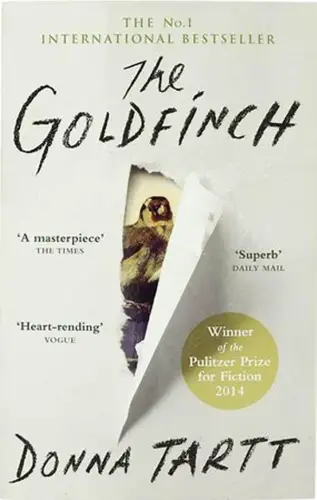

The Goldfinch
Date Published: September 23, 2013
Disclaimer: As an Amazon Associate I earn from qualifying purchases.

